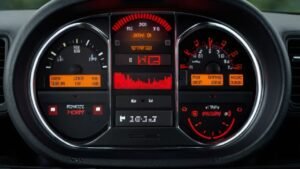
When it comes to How many miles to drive after disconnecting battery, there is no bone-size- fits-all rejoinder. The distance you should punch largely depends on several procurators, involving the type of agent, machine specifications, driving conditions, and the argument for decoupling the battery.
Usually, it’s passed to punch at least 20-30 long hauls after decoupling the battery to ensure that the agent’s electronic systems have had sufficient time to reset and recalibrate This distance allows the machine control unit (ECU) and other onboard computers to relearn essential parameters similar as energy trim, idle speed, and transmission shift points.
Still, for some vehicles, especially those with further advanced electronic systems or complex machine operating systems, driving 50 – 100 miles may be necessary to completely complete the relearning process.
In summary, while there is no exact avail demand, aim to drive at least 20 – 30 miles after disconnecting the battery to allow your vehicle’s electronic systems to reset and recalibrate duly. Acclimate the distance as demanded, grounded on your vehicle’s specifications and driving conditions.
What Problem can happen after disconnecting battery?

Disconnecting a vehicle’s battery can lead to several implicit problems, primarily due to the dislocation it causes to the vehicle’s electronic systems. Some common issues that may arise after disconnecting the battery include
- Loss of Electronic Memory: decoupling the battery resets the vehicle’s onboard computers, causing them to lose stored data similar as radio presets, seat positions, and trip computer information.
- Idle oscillations: After reconnecting the battery, the machine control unit (ECU) may need time to relearn idle speed and energy trim settings, leading to oscillations in machine idle speed or rough footling.
- Warning Lights Resetting: the vehicle’s electronic systems can spark warning lights on the dashboard, similar to the check machine light, ABS light, or traction control light. These lights may illuminate temporarily as the systems recalibrate.
- Transmission Shift: Adaptation Vehicles equipped with automatic transmissions may witness changes in shifting behavior after battery disposition. The transmission control module (TCM) may bear driving to relearn shift points and acclimatize to the motorist’s behavior.
- Driveability Issues: In some cases, decoupling the battery can beget driveability issues similar to vacillation, rough acceleration, or poor garrote response until the vehicle’s electronic systems have completely recalibrated.
- Security System Activation: Some vehicles have plant-installed security systems that may spark after battery disposition, taking a reset procedure or entering a security law to kill.
- Accessory Malfunction: Certain vehicle accessories or features, similar as power windows, power seats, or automatic headlights, may bear reinitialization or recalibration after battery disposition to serve duly.
Does Disconnecting Battery reset the car?
Yes, disconnecting the battery can reset certain aspects of the car, such as radio presets and clock settings. However, it doesn’t reset the entire vehicle. Some critical systems may require additional steps to reset or relearn their settings, and disconnecting the battery may trigger the vehicle’s anti-theft system, necessitating a security code or system reset. Always follow proper procedures outlined in the vehicle’s owner’s manual when disconnecting the battery.
What happens if car battery disconnects while driving?

Passing an auto battery disconnects while driving can be a jarring and potentially dangerous situation. Then are some of the crucial consequences and implicit pitfalls associated with an auto battery disconnects while driving
- Loss of Power: Steering numerous ultramodern vehicles calculate on power-supported steering systems that bear electrical power from the battery to function. However, the power steering system may fail, making it delicate or insolvable to steer the vehicle, If the battery disconnects while driving.
- Loss of Brake Assist: Vehicles equipped with anti-lock retardation systems (ABS) and electronic stability control (ESC) calculate on electrical power to operate. A battery disconnecting can beget these systems to malfunction or kill, compromising the vehicle’s capability to maintain traction and stability during retardation or fugitive pushes.
- Lowered Lighting: The auto’s headlights, taillights, and other surface lighting systems may shroud or shut off entirely if the battery disconnects while driving. This can reduce visibility for the motorist and increase the threat of accidents, particularly in low-light conditions or tempestuous rainfall.
- Stalling or Engine Shutdown: In some cases, an unforeseen loss of electrical power due to a battery disconnects can beget the machine to stall or shut down suddenly while driving. This can lead to a loss of control over the vehicle and increase the threat of collisions, especially on busy roads or roadways.
- Loss of Instrument Cluster Functionality: The vehicle’s instrument cluster, including the speedometer, energy hand, and advising lights, relies on electrical power to display vital information to the motorist. A battery disconnects can beget these displays to malfunction or go dark, injuring the motorist’s capability to cover vehicle status and reply to implicit hazards.
- Incapability to renew the Engine: If the battery disconnects while driving and the machine booths, trying to renew the machine may be unprofitable due to the lack of electrical power. This can leave the motorist stranded in a potentially unsafe position, similar to a busy crossroad or trace shoulder.
- Implicit Fire Hazard: In rare cases, a battery dissociate while driving can lead to electrical arcing or sparking, adding the threat of fire or electrical damage within the vehicle’s electrical system. This poses a serious safety hazard to inhabitants and other road druggies.
Overall, passing an auto battery disconnect while driving can affect in a range of dangerous consequences and should be addressed instantly to insure the safety of everyone on the road. However, it’s essential to pull over to a safe position, turn on hazard lights, If you suspect a battery disconnect while driving.
How many miles to drive after disconnecting battery for smog check?

When preparing for a smog check after disconnecting the battery, it’s essential to drive your vehicle for a sufficient distance to allow the onboard computer to complete its diagnostic tests and reset the emission monitors. While there is not a specific avail demand commanded widely, experts generally recommend driving for about 50 to 100 miles after a battery dissociate to ensure that the vehicle’s emigrations control system has had acceptable time to recalibrate and complete its readiness tests. Still, this can vary depending on factors similar as the vehicle’s make and model, driving conditions, and original regulations. It’s always stylish to consult your vehicle’s proprietor’s homemade or communicate a pukka gauze check technician for specific guidance acclimatized to your vehicle and position.
How long should I drive my car before emissions test?

Before an emission test, it’s pivotal to drive your auto for an acceptable period to ensure that the vehicle’s onboard computer, known as the Engine Control Module (ECM), has completed its tone-individual tests and readiness observers. While the specific driving distance may vary grounded on factors similar as your vehicle’s make and model, original regulations, and driving conditions, experts generally recommend driving for at least 20 to 30 minutes. During this time, try to include a blend of megacity and trace driving to allow the ECM to assess colorful operating conditions. Also, it’s judicious to drive easily without aggressive acceleration or retardation to insure accurate test results. Always relate to your vehicle’s proprietor’s primer or consult with a good technician for specific recommendations acclimatized to your vehicle and position.
Summary Table:
| Situation | Recommended Distance to Drive |
| General Relearning Process | At least 20–30 miles |
| Advanced Electronic Systems | 50–100 miles |
| Preparing for Smog Check | About 50–100 miles |
| Before Emissions Test | At least 20–30 minutes of mixed city and highway driving |
Conclusion
In conclusion, the distance you should drive after disconnecting your auto’s battery depends on factors similar as the vehicle’s type and electronic systems. Generally, aim for at least miles to allow acceptable time for system recalibration. For advanced systems or emigrations tests, driving 50–100 miles may be necessary. Always consult your primer or a technician for specific guidance. By following these recommendations, you can insure your vehicle operates optimally after a battery disconnect.